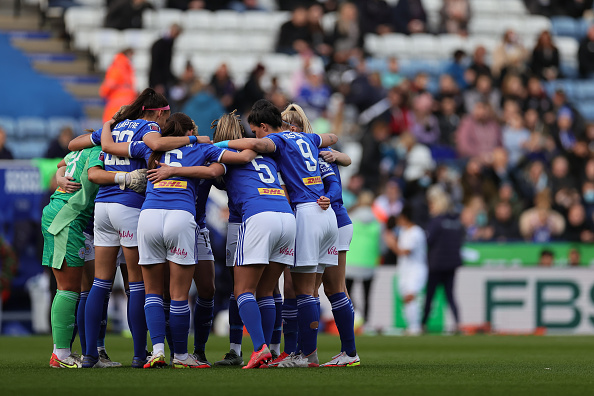Several weeks ago, Wembley stadium hosted yet another memorable date in its long special history. This time around it concerned women’s football.
Women’s Football Reforms: What Is Needed for the Next Step in the Growth of the Beautiful Game
FA Cup Final
The FA Cup final remains a standout date on the calendar and the match against Chelsea and Arsenal was no different. Except, this day meant more than just lifting a trophy.
A century ago, the Football Association banned women from playing the sport, ultimately setting back women’s football generations. Their reasoning was that the sport was “quite unsuitable for females”, despite tens of thousands of fans attending matches. Half a decade later, the FA lifted the ban.
To reconcile with its past, the FA stood tall against its history by turning its predecessors’ crime into a landmark moment by playing the final on the anniversary.
Match-goers injected brightness and jubilation into the gloomy afternoon affected by omicron fears. Chelsea manager Emma Hayes paid tribute to the ‘sacrifices’ of every woman who made the occasion possible.
The moment represented freedom, equality, legitimacy and acceptance. Whilst times have changed, there is still a long road ahead. Women’s football reforms are inevitable, but they are needed to build upon altering attitudes and the evolution of the sport.
Changing Attitudes
One of the most drastic changes women’s football has experienced in the last ten years is the shift in national attitudes to the game.
In March 2021, the FA negotiated a record-breaking £8 million per year TV deal with Sky and the BBC sharing the rights. Some of the money will be reserved for infrastructure investments, such as supporting refereeing development, and merit-based circumstances. The rest is split 75% for the Women Super League and 25% for the Championship.
UEFA also saw success with streaming giants DAZN and YouTube acquiring rights to show all 61 women Champions League matches across four seasons. This is the first year every match has been broadcasted. Chris Slegg, a sports journalist and commentator for YouTube’s coverage, labelled it as a “seismic shift”.
However, Deborah Dilworth, the lead for the women’s game at the Football Supporters Association (FSA), raised similar concerns about broadcasting that is regularly discussed in men’s football.
“It will aid the women’s game in many ways – injection of money and visibility,” she told Last Word On Football.
“However there are some downsides. What happens to the importance of in-stadia fans? What happens to their experience? Money is weighted towards clubs who already have more money and matches get moved for TV at short notice.”
England’s Lionesses Could Help to Inspire Next Generation
These issues are likely to be repeated as women’s football continues to grow. One such event that will contribute to this is the European Championships set to take place this summer in England.
Chris Slegg said this tournament “probably will be a major international tournament given equal respect to the men’s tournament here in England.
“It still won’t be on par with the national hype, but I still think it will be pretty close to having a men’s tournament.”
The sports journalist of 20 years also feels that this continued acceptance and growth of women’s football has also impacted men when it comes to family life and the next generations attitudes.
“My generation of men will take just as much pride in taking their daughter to a football lesson or taking their daughter to a football match. Men and women don’t have to feel this isn’t a pursuit for your daughter. Everyone is just welcome to enjoy it.
“It is led by the media saying ‘look, this is just football. It is a game. It doesn’t matter if women are playing it.’
“This is the first season where we have had the BBC showing games regularly on the terrestrial channels and Sky showing it every week. Just how powerful that is, that young boys and girls will watch a football match and our daughters and sons will not question ‘oh, why is it women playing’. It is just football.’”
Financial Redistribution
Lodged inside the Fan-Led Review of Football Governance are recommendations on how the men’s economic system should be transformed. The idea is to implement greater financial redistribution, therefore creating greater equality and balanced resources for all.
While the Premier League engaged in a fierce and inaccurate tug-of-war, their counterparts stayed away from the limelight despite suffering from similar issues on a damning scale.
“Some teams don’t even get enough money for their own travel,” Kerrie Evans, a representative of Chelsea Women Supporters Group said.
“The wealth needs to be spread a bit more, so people don’t spend money out of their own pocket. Clubs are technically losing money for playing an FA Cup game. The prize money needs to be different.”
Chris Slegg echoed the same concerns.
“Lewis is leading the campaign to ask the FA to redistribute prize money. Winning the men’s FA Vase means you will get £5,000 more for winning that competition (£30,000) than you would get for winning the women’s FA Cup (£25,000).
“There are a lot of questions being asked of the FA. That is an issue they are going to need to look at pretty soon. It doesn’t sit right at all.”
One women’s football reform cannot be a women’s club relying on their men’s club to provide financial resources.
Evans said: “Some teams are linked to the men’s team, but you have Durham who is not linked with a men’s team. You cannot really put something saying men’s need to support the women’s team because that will affect Durham.”
Tracey Crouch, the chair of the government review, did not dedicate a huge amount of time recommending solutions to these problems in women’s football. She instead wants a review devoted to women’s football reforms.
When this work will get started, however, is yet to be known. “We are working hard behind the scenes to prepare for the separate review into women’s football and welcome it,” Dilworth said.
Supporting Injured Players
In men’s football, when a player goes down injured, concerns will immediately turn to the severity of the injury. But worries over funding never enter people’s minds. Women’s football does not have this luxury.
“Even within the Championship, certainly in the last couple of years, a player can get a very serious injury and be basically left on their own to fund that injury,” Slegg explains.
“They are not going to get support from their clubs to help them get the treatment they need. To think you can have players, at that level, of the women’s game – the top 22 clubs in England – and you will get injured, and you will have no support to help you recover.
“I am not sure how far down the men’s pyramid you will have to go to be left in that position. There will be, quite rightly talented young boys at top clubs, getting better support who are not yet grown, professionals.
“You would get better care and attention than the very best women players at the very top clubs. The duty of care to injured players needs to be addressed very soon.”
The Power of the FA Cup
Whenever the FA Cup arrives on people’s doorsteps, talk of its magic is never too far behind.
While men’s football grapples with the annual challenges of keeping the FA Cup relevant, the significance of the tournament lives on in the women’s sport. Slegg believes it is the only chance for some teams to receive national recognition.
This particularly applies to fourth-tier sides Doncaster Rovers Belles LFC and Southampton Women. Rovers are third on the all-time winner’s list for their six trophies during the 1980s and 1990s, whilst Southampton is second for their eight FA Cups between 1970-1971 and 1980-1981. “It is through the FA Cup those clubs are going to get talked about,” Slegg said.
However, both teams are out of this year’s edition. Instead, Lincoln City, Newcastle United, Billericay Town, and Exeter City, have the opportunity to take the spotlight as the remaining fourth-tier teams.
One key difference is, where men’s football is fixated with discussing magic, women’s football is immersed in the power of the FA Cup.
“It is almost more powerful than the WSL,” Slegg said. “Your audiences understand cup football in a way they might not understand the league.
“If I am explaining to my children what this cup match means at the end of the day: somebody at the end of the Wembley final will pick up a cup, they have won that competition.
“In the league, you rarely get a chance to say at the end of this game it is going to mean everything. On the final day, you might be able to say that. There might be a day three or four games before the end of the season, if they win this, and the other team loses, then they are going to win it.
“It is more complex and clunky to explain to very young kids league football than cup football. Having a national cup competition is a really important thing. Cup football is a really powerful way to tap into really young audiences.”
Fans Key to Women’s Football Reforms and Growth
Cup football is now playing a fundamental role in growing women’s football. Attracting young audiences is critical for the FA to reach its attendance targets.
By 2024, the FA want 6,000 fans and 1,000 fans to be attending WSL and Championship matches per week, respectively. They also hope to be selling-out Wembley by the same time.
Optimism these goals can be reached is reinforced by almost 41,000 fans heading to Wembley for the FA Cup final, despite COVID fears and harsh winter weather.
Greater interest is also shown through 1.3 million watching the match on BBC One and 160,000 streaming it on BBC iPlayer. Almost 3,000 also attended The Hive, home of Tottenham Hotspur’s women side, for the North London Derby in the WSL. This was 120% higher than their previous attendance record.
“I firmly believe that supporters groups are key to growing matchday attendances”, Dilworth said.
“They are a key part of understanding and encouraging supporters in, helping get supporter voices into key decisions being made about them and also offer a group to sit with if you are new to the game.
“The FA has now committed in their new strategy to work with fans groups. This is a key step in the building of the relationship.”
In the end, the final goal is crystal clear for the FSA. “Ensuring women’s football is sustainable and is not impacted by men’s football in a negative manner,” Dilworth replied when asked about the biggest issue facing women’s football.
How women’s football reforms in the next decade will be indispensable to balancing this scale. Reforms will be needed. But, ultimately, men’s football must be willing to create space for their opposite number.
Main Photo






